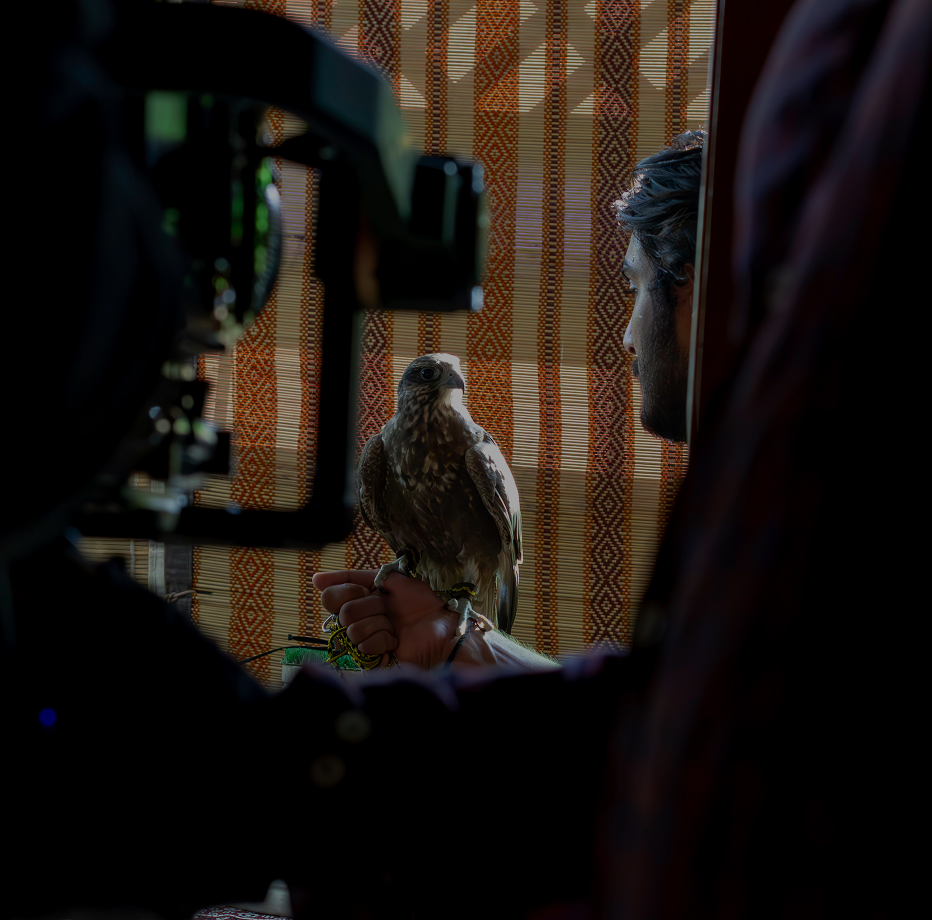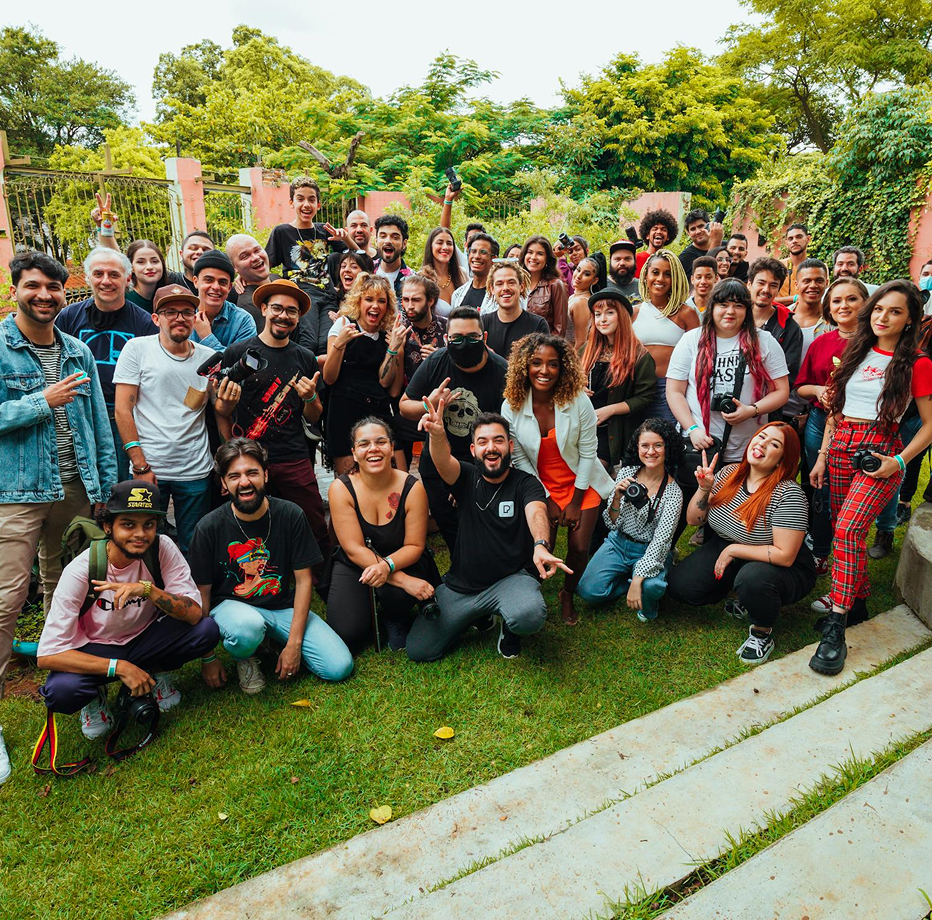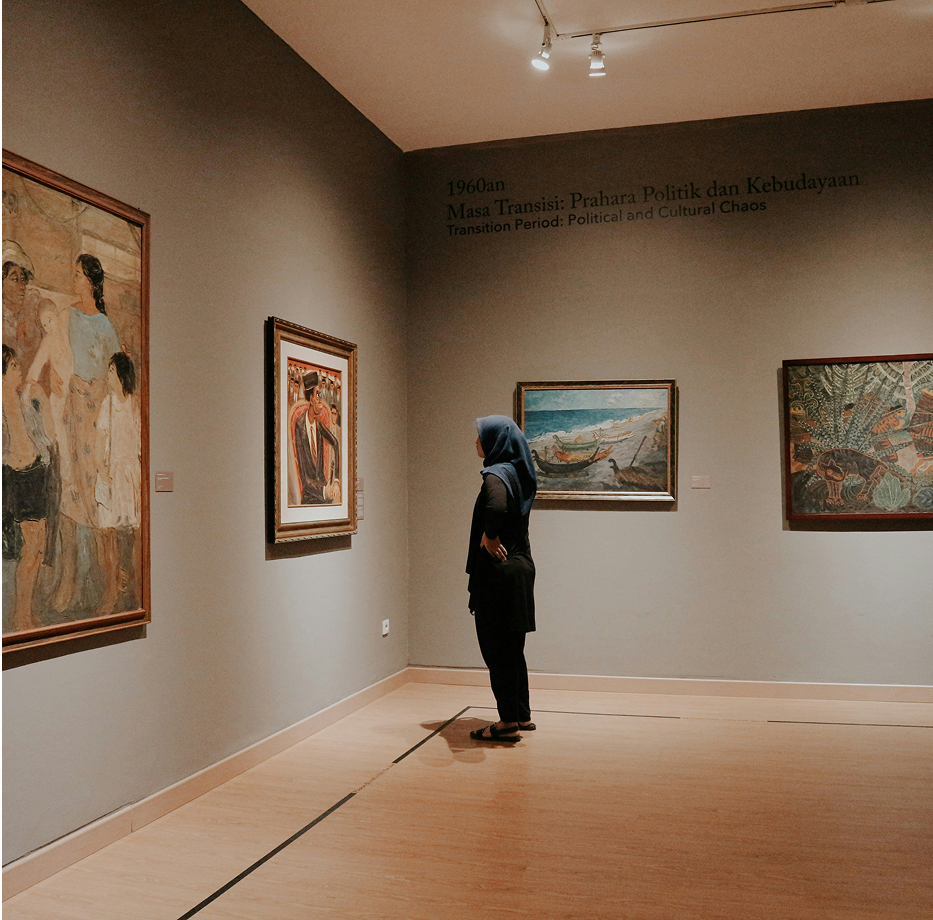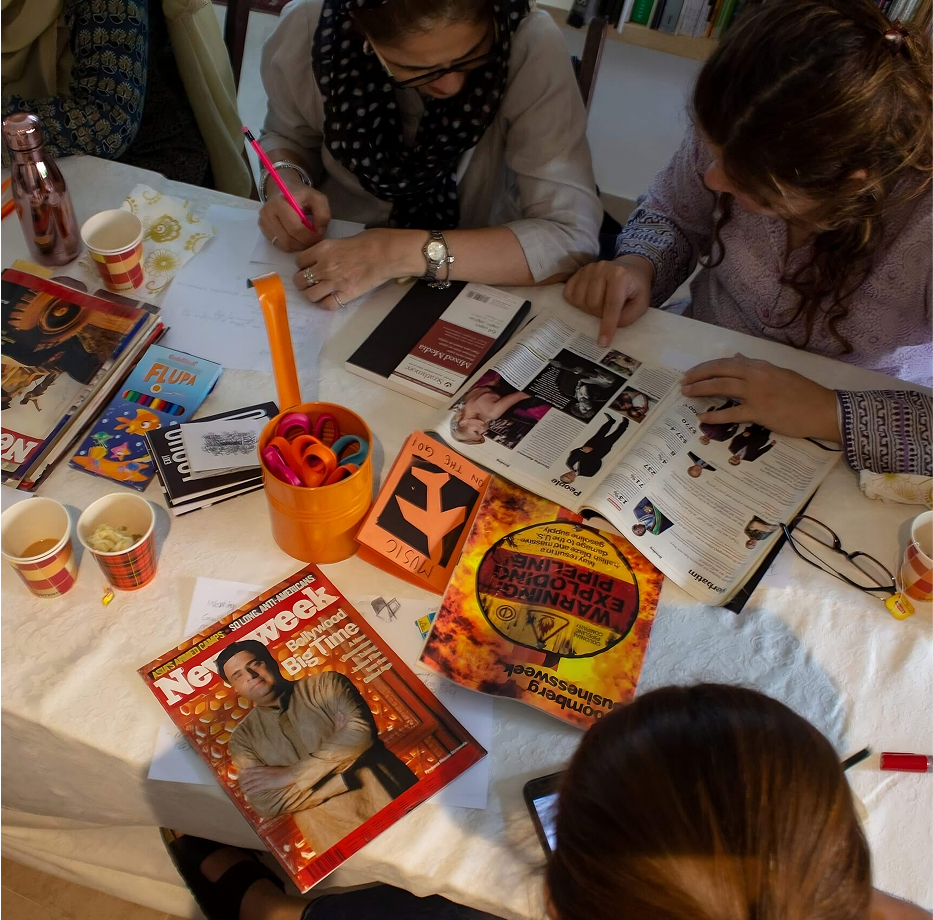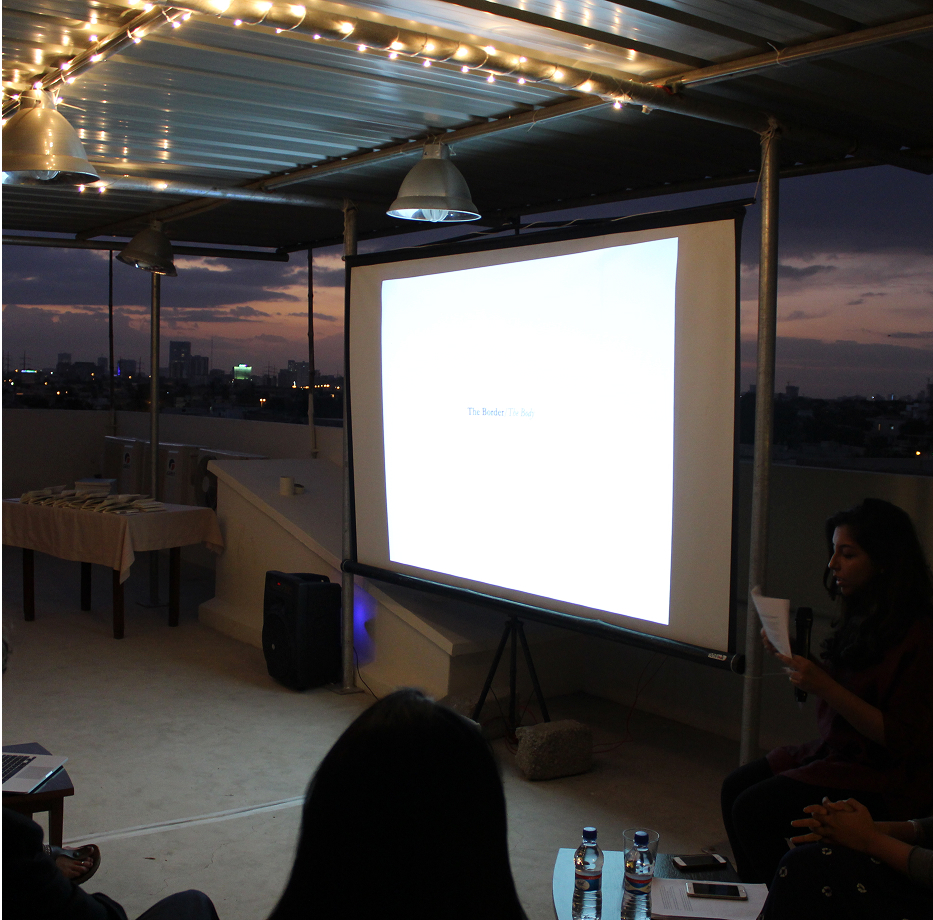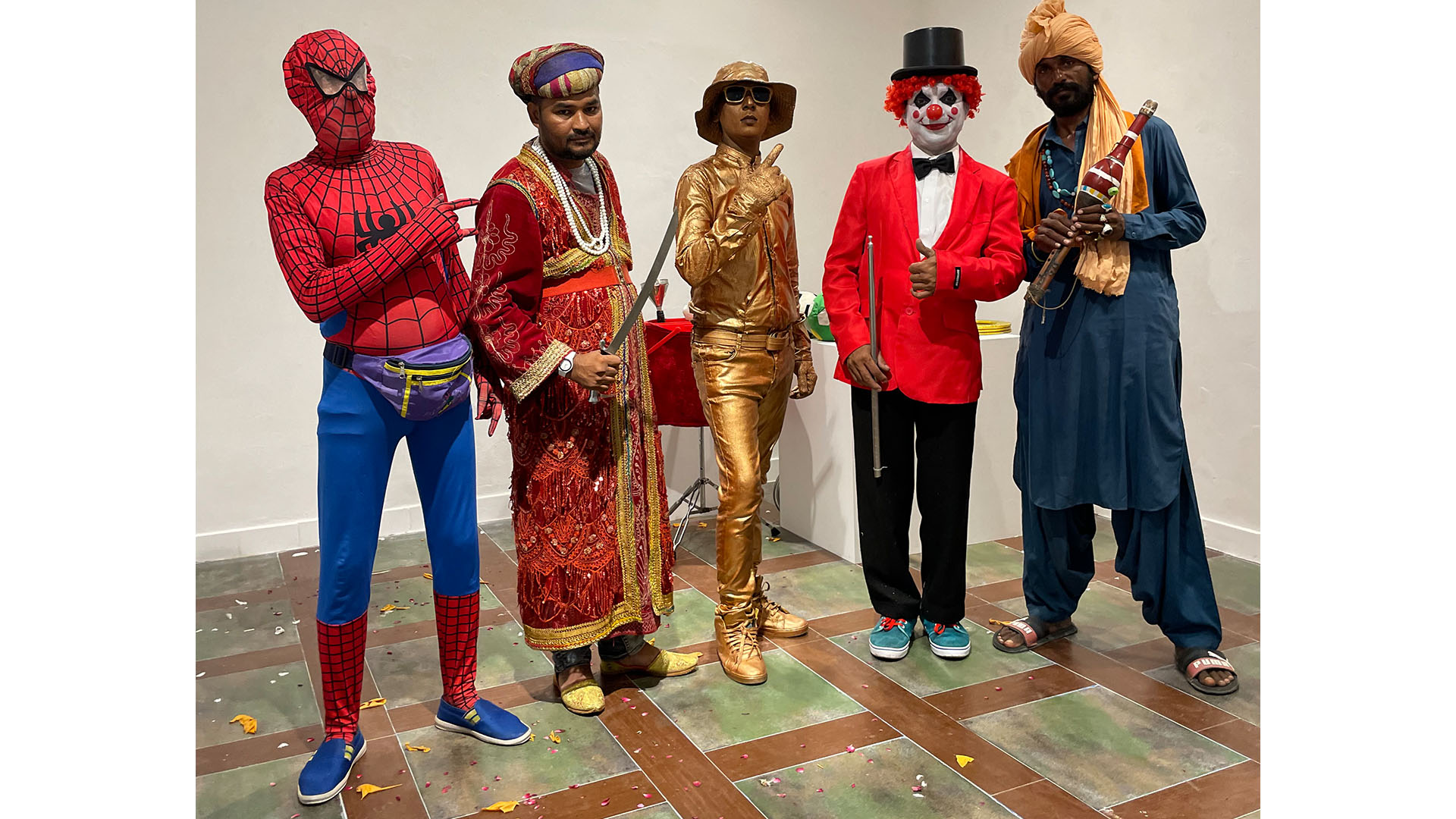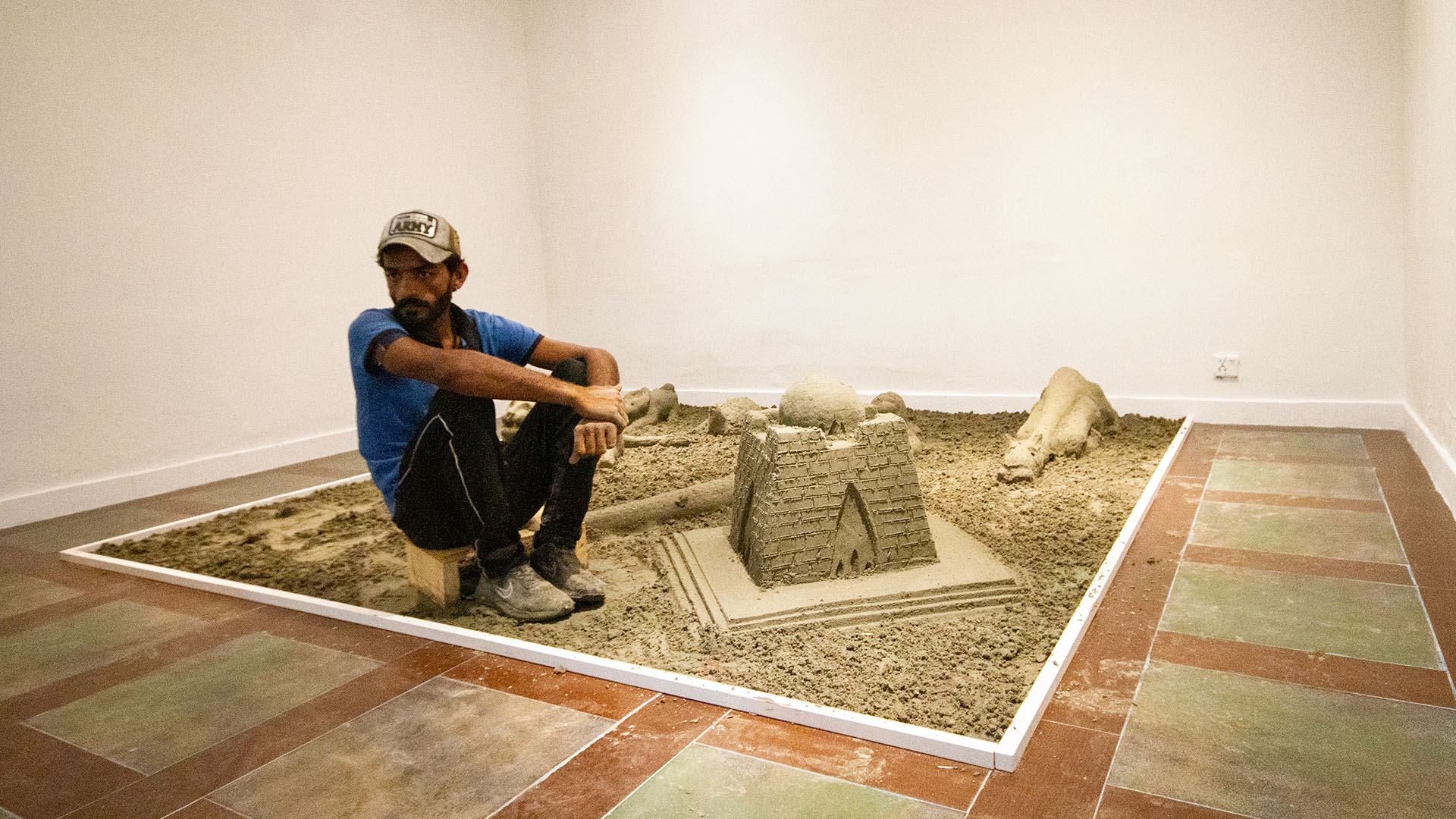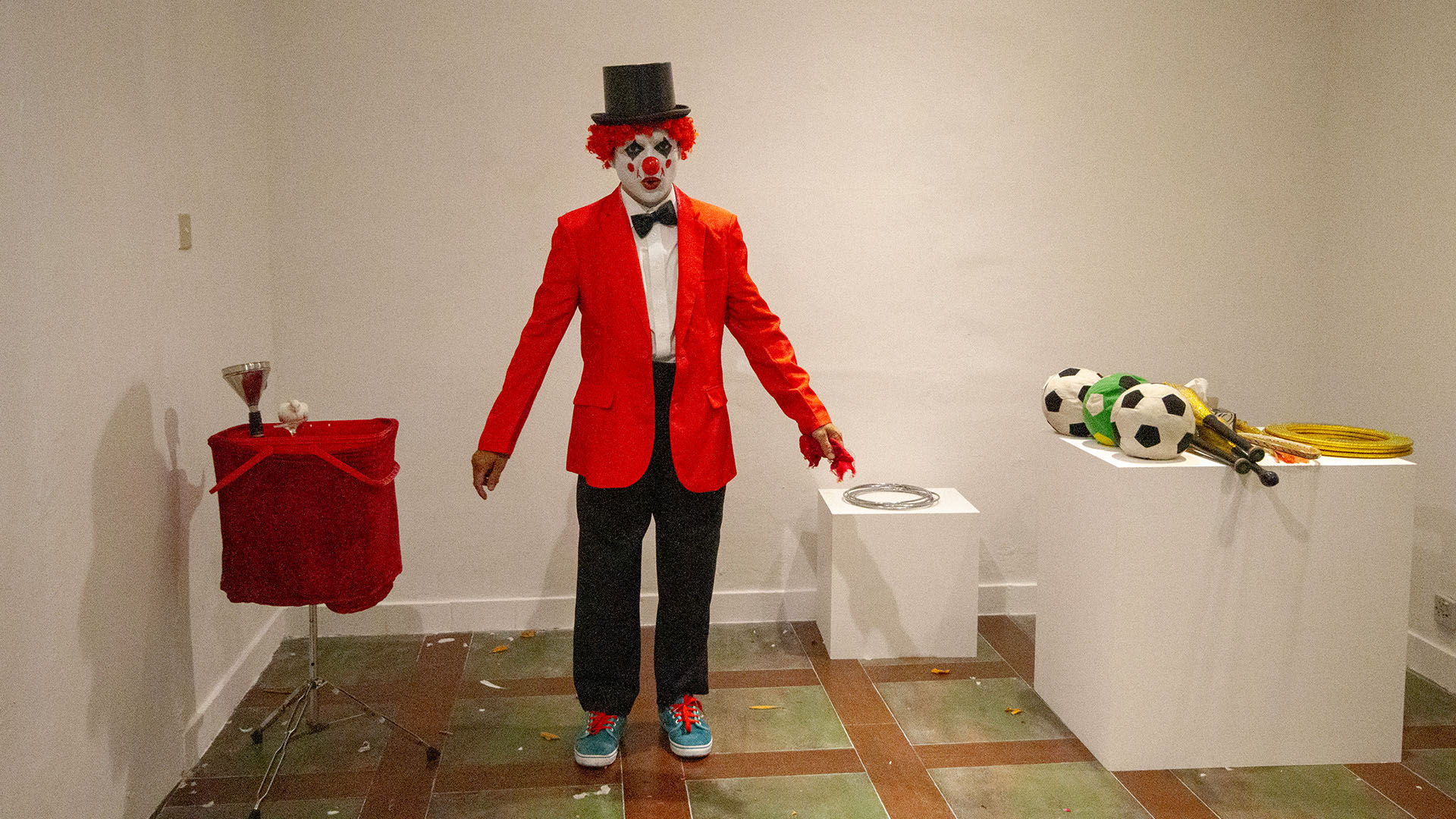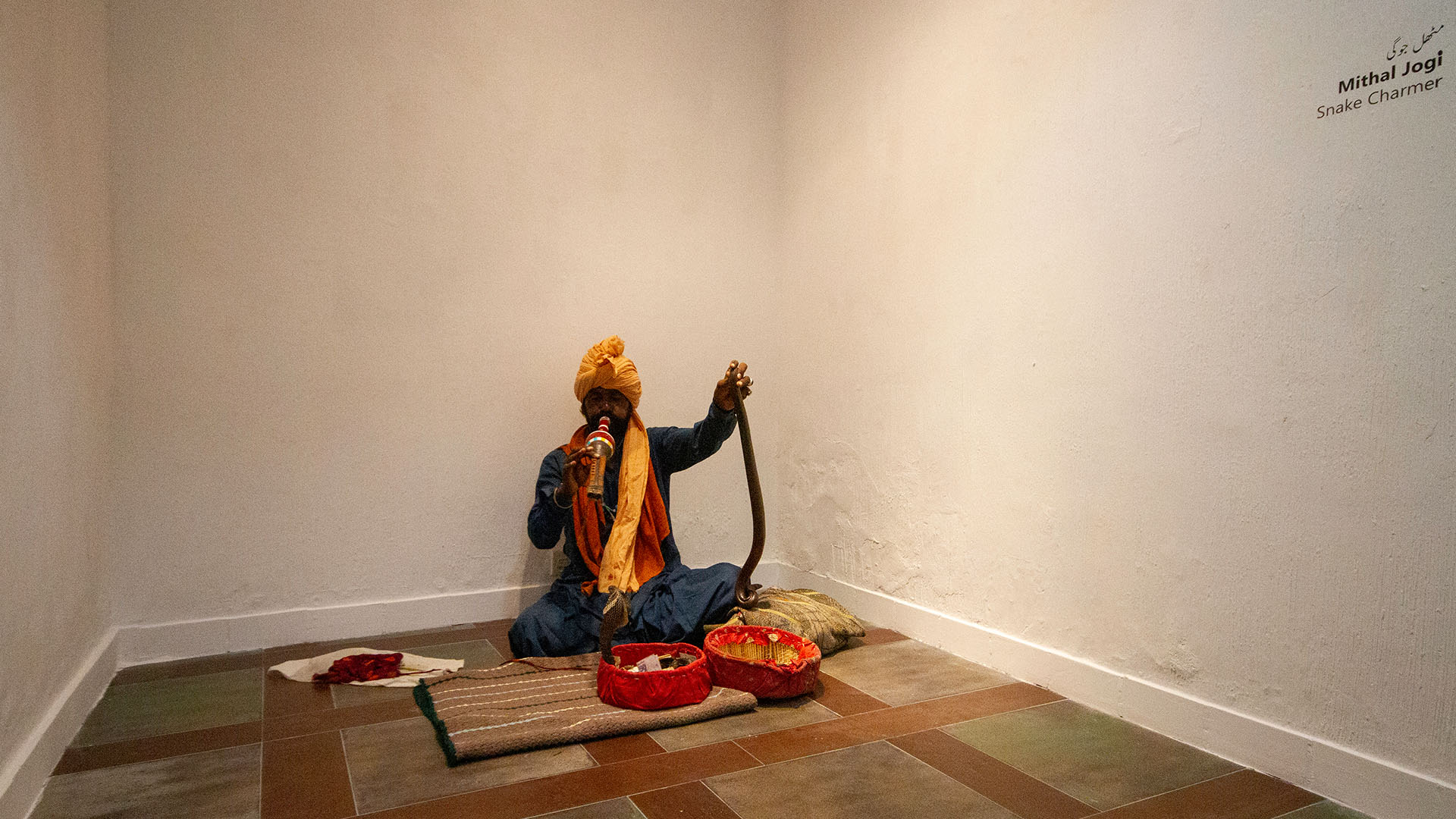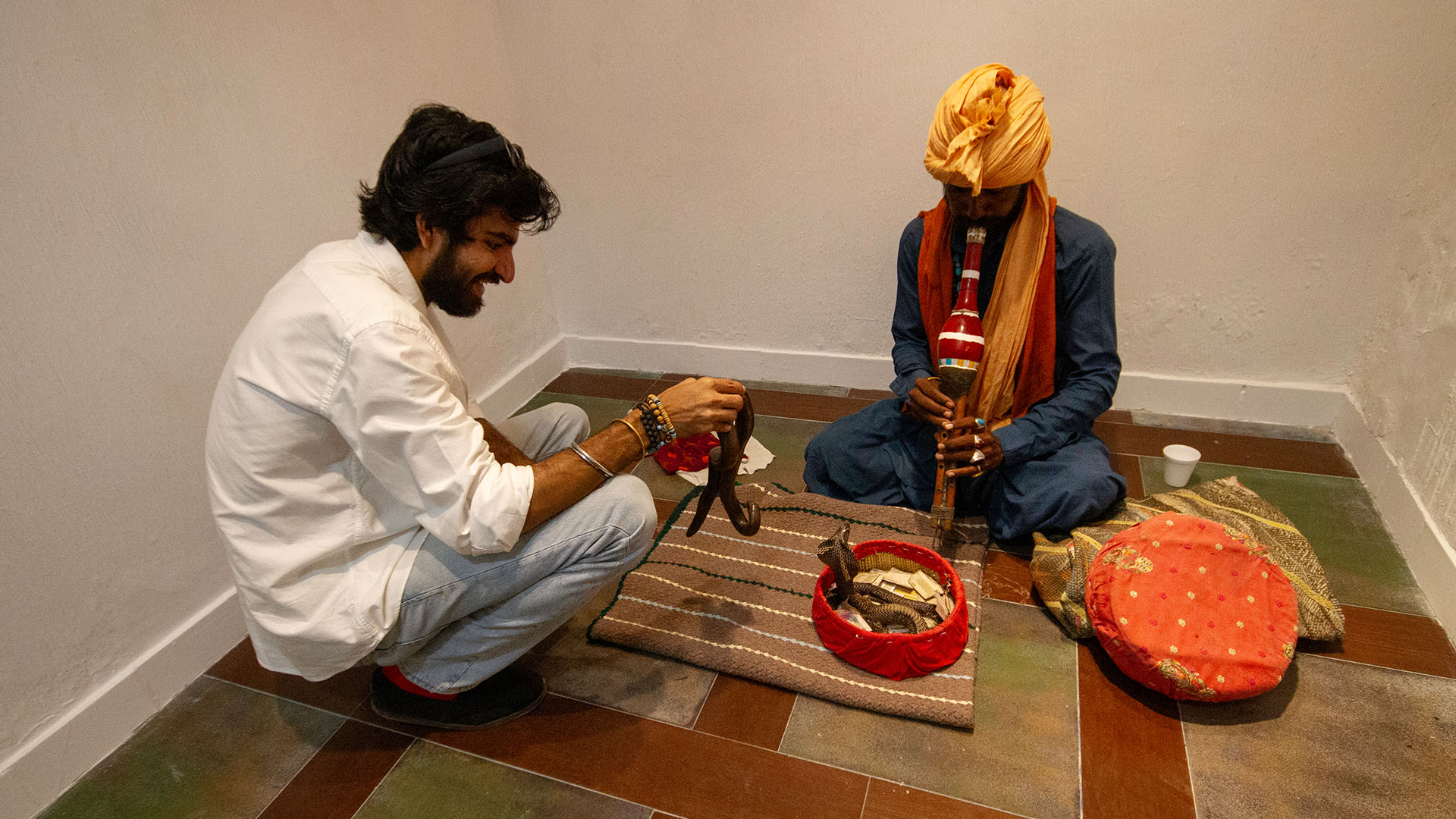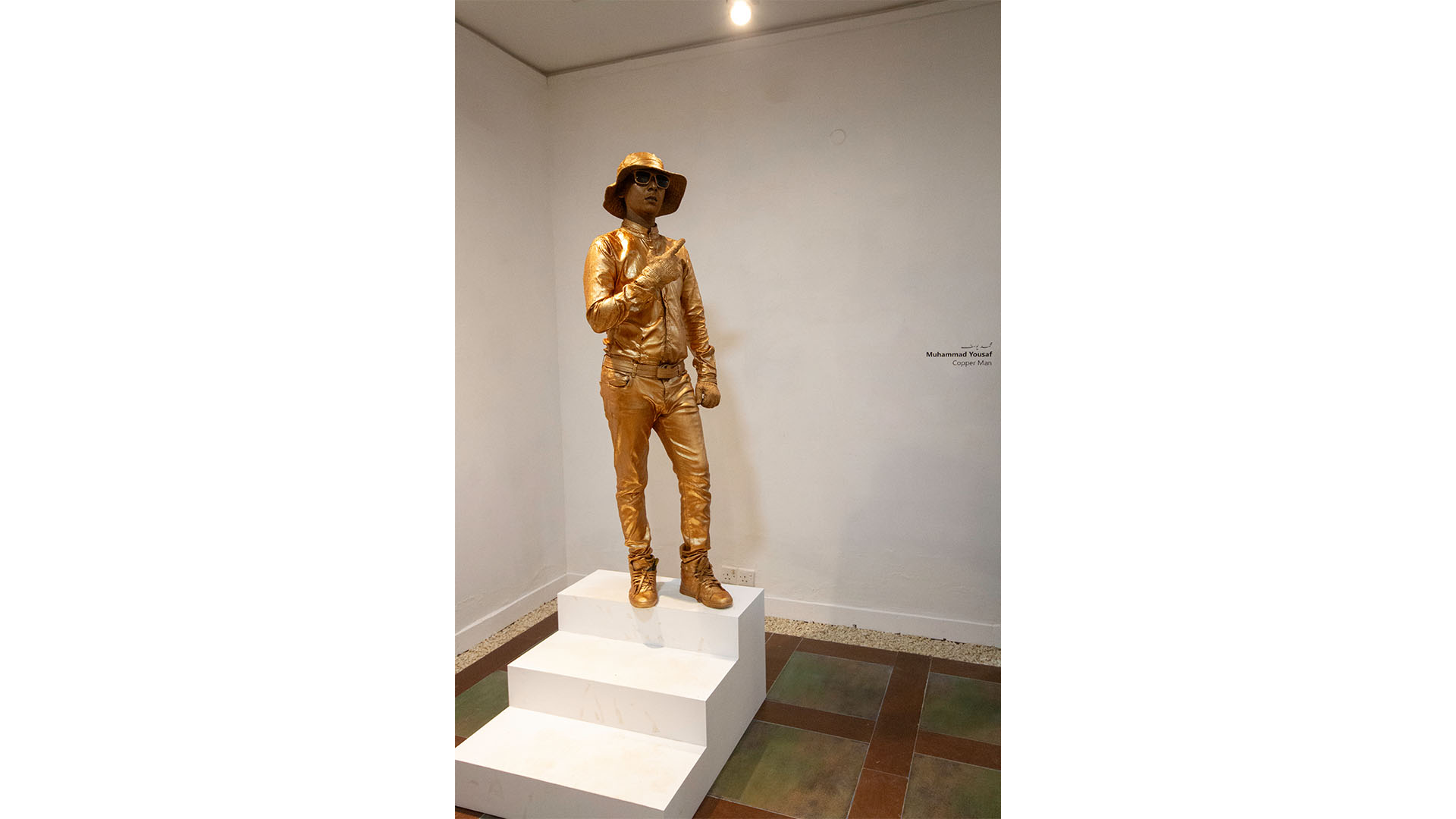Practice-in(g) Performance, curated by Asavir Nadeem
About
This exhibition delves into the intersection of performance as both a cultivated practice, passed down through interdisciplinary training and intergenerational knowledge, and an improvised independent practice; a sensory, temporal, and spatial interruption in a city’s social fabric. The exhibition explores how the artists’ performances that usually converse with and critique Karachi’s changing urban contemporary landscape and aesthetics transform when invited into an art gallery.
The audience is invited to question and explore hierarchies and binaries between “performance art” and “performing art”. The selected artists actively engage in critical dialogues through public interventions and invitations, where audience involvement often plays a crucial role in the creation, activation, or even dissolution of their art practice, thereby situating such street performances within the realm of performance art. While historically, snake charmers have left an indelible mark on situating art in everyday life, modern cityscapes are witnessing the emergence of performers like Spiderman, who are becoming central spatial and visual features within the city, pausing, interrupting, and intersecting with the locale’s visual and cultural vernacular. In a similar vein, sand beach artist Muhammad Moosa practices live art at a populous beach, immersing in an interactive, dynamic conversation with the topology of Karachi. His movements and gestures respond to natural elements like wind, sand, and moisture and incorporate discarded, washed-up, or found items on the beach. Thus, the artists not only respond to the city’s politics, spatial and visual identity, topology, and aesthetics but also engage in active conversation with and resistance against them, demarcating their performative footprints through their creative practice.
‘Practice-in-(g) performance’ invites ‘(g)local’ artists, examining the artistry and social commentary embedded in their work. Street performers like the Golden Man operate outside the mainstream art world, yet their creativity, engagement with the public sphere, as well as the utilization of their body as an instrument of rigorous endurance, are undeniable.
This exhibition challenges the arbitrary distinctions that exclude such performances from the conversation on art. The sterile gallery, modeled after the ‘white cube,’ has traditionally served as a platform for sanctioned art forms. ‘Practice-in-(g)performance’ actively disrupts this hierarchy, where the gallery ceases to be the sole arbiter of artistic value, instead becoming a platform for dynamic exchange. This exhibition examines how gallery spaces legitimize art forms, delving into Karachi’s diverse city performances where art, craft, labor, tradition, and entertainment have persisted and emerged beyond institutions and stamps of ‘legitimacy’ by assumed cultural artistic authority. Thus, the exhibition challenges the disconnect between galleries and public spaces, inviting reflection on art’s definition beyond.
Asavir Nadeem
Asavir Nadeem is an interdisciplinary artist and researcher based in Lahore. She completed her BFA with Honours from the National College of Arts, Lahore. She is currently working as a curator, project manager, and researcher for various artistic projects. She is the co-curator of Taiz Larkiyan, a research-based artistic project that investigates the intersection of spaces, mobility, and identity while imagining indigenous and alternate systems of living (funded by Transforming Narratives, British Council, and Arts Council UK). She is also the co-curator, researcher, and project manager for Safar-e-Funoon, a research-centered, educational, digital archive that presents and analyses Pakistani art in an accessible manner. Asavir has also worked as a Curatorial Assistant for Be(Coming) The Museum, a research-based art project that invited artists to develop contemporary connections to history through the Lahore Museum’s collection of art and artifacts from prehistory to the present. (Canadian Community Arts Initiative and BNU-MDSVAD in collaboration with Lahore Museum, and ThinkFest Lahore).
Asavir’s work has been exhibited both nationally and internationally. She won a scholarship to the Global Undergraduate Exchange Program and was awarded the Award for Best Contemporary Drawing and the Union Purchase Award at the Annual Jury Exhibition at the Lawton Gallery, USA (2019). Her work has also been exhibited at O Art Space (2021), The Lens and The Pen Exhibit at Tasweerghar (2021), VM Art Gallery’s 17th Emerging Talent Exhibition (2022), Muse Gallery (2022), Khamsa Art Gallery (2022), and “Visions of Sound” by LoosenArt in Rome (2023). Her work has also been published in Artmaze Magazine’s
23rd Issue and other local and international magazines. Selected artworks of hers are housed within the permanent collection of the Ambiance Boutique Art Hotels. She has also been selected as a member of the Women & Gender Minorities in Music Tech – Pakistan programme (The British Council Pakistan in collaboration with Saffron Music – UK).
Participating Artists
Abdul Rasheed- Spiderman
Abdul Rasheed, is known for his outstanding naan-making skills at Karachi’s top eateries like Avari Tower and BBQ Tonight underwent a significant career shift during the COVID-19 pandemic. Inspired by a child in a Spiderman costume, he set out to spread joy through playful public interventions in Karachi’s streets. For two years near the National Stadium, he showcased his talent, gaining local attention. Subsequently, he received public invitations to perform at Sea View, using his body as an expressive canvas, inviting interaction and exploring play and spectacle. Rasheed’s Spiderman costume challenges age stereotypes,
where elements of play are used in practice for social commentary. Reshaping Karachi’s scene, he delves into body and endurance art, navigating the dynamics between the performer, the audience, and the city.
Jamal Shah – Magician
Jamal Shah, a versatile artist, entertainer, designer, and event organizer, boasts a 25-year career in the performing arts. With extensive experience in circus (such as the “Star Circus”), theatre, and stage productions throughout Pakistan, he has portrayed various roles ranging from professional clown to magician, and even a unique hybrid of the two. By blending magic and costumes, Shah challenges conventional theatre norms, exploring hybridity in Karachi’s street spaces. Transitioning from ticketed audiences to interactive street performances, he infuses humor with play and social commentary. Shah sees his art as resistance, offering solace from societal challenges. He aims to merge performance art with socio-political education, empowering disabled individuals for societal change.
Mithal Jogi- Snake Charmer
Originating from Umerkot, Maithal Jogi’s performances embody intergenerational expertise, passed down since his youth. His creative pursuits extend beyond mastery of the “been,” honed through rigorous training under his Ustaad. Alongside showcasing remarkable endurance with the wind instrument, he possesses profound herpetological expertise in handling snakes from regions like Thar. Regularly performing in local neighborhoods, Maithal ignites curiosity and awe through spontaneous sensorial performances. For three years, he’s entertained sizable crowds weekly at Sea View and educated audiences on snake knowledge at diverse venues. Jogi’s creative practice seamlessly blends convention, skill, and endurance, bringing intergenerational knowledge to Karachi’s contemporary urban landscape.
Muhammad Moosa – Sand Beach Artist
Muhammad Moosa embarked on his creative journey in 2003, leaving Rahim Yaar Khan for Karachi. Fascinated by children crafting sand sculptures on the city’s beaches, he refined his craft under mentor Arif Hussain. Inspired by imaginative tales, Moosa’s sculptures are ephemeral, time-intensive, and subject to the wind and public interaction. Collaborating with Sea View’s community, he utilizes basic tools and repurposed items, improvising with sand, wind, and water. His dynamic practice involves grand gestures and instinctual movements, lasting over 12 hours before live audiences. These sculptures reflect on city life’s transient nature, exploring impermanence and collaboration. Moosa aims to showcase his artistry globally, sharing his creativity and ideas on beaches worldwide.
Muhammad Yousaf – Copper Man
Muhammad Yousaf, a versatile artist and educator, has thrived in a 15-year career spanning dance, stage artistry, and street performance, all the while pursuing the discipline of theatre while also collaborating with national artists. Trained in Lahore, he has showcased his talents nationwide, guided by his mentor, Ustaad Thakur. Recently, he’s immersed himself in becoming the “Copper Man,” captivating Karachi’s public spaces like Ocean Mall with 7-8-hour performances. Yousaf’s art delves into immersive experiences, challenging conventional norms in performance and visual art, embodying endurance and mastery over his body. His vibrant metallic aesthetic interrupts Karachi’s fast-paced city culture, demanding contemplation in its bustling environment.
Shakir Sheikh – Shahzada Salim
Shakir Sheikh, a Karachi-based performer seamlessly embodies diverse roles from historical figures to a playful Joker, enriching Pakistan’s cultural landscape through his presence in dramas, films, TV, and public performances. Under the guidance of Ustaad Chotay Khan, his talents draw from a custom that spans back to pre-partition India, where poetry is recited to engage diverse audiences, requiring a high degree of improvisation. Sheikh’s poetry, whether as Shehzada Salim or in other roles, shifts from historical accounts to myths and local folklore, all the while re-contextualizing them in contemporary life, integrating both the “poetic” and the “political” to spark conversations on social and cultural concerns through traditional art forms. Sheikh regularly performs at Shandaar Shinwari, honing his expertise through continuous praxis.
